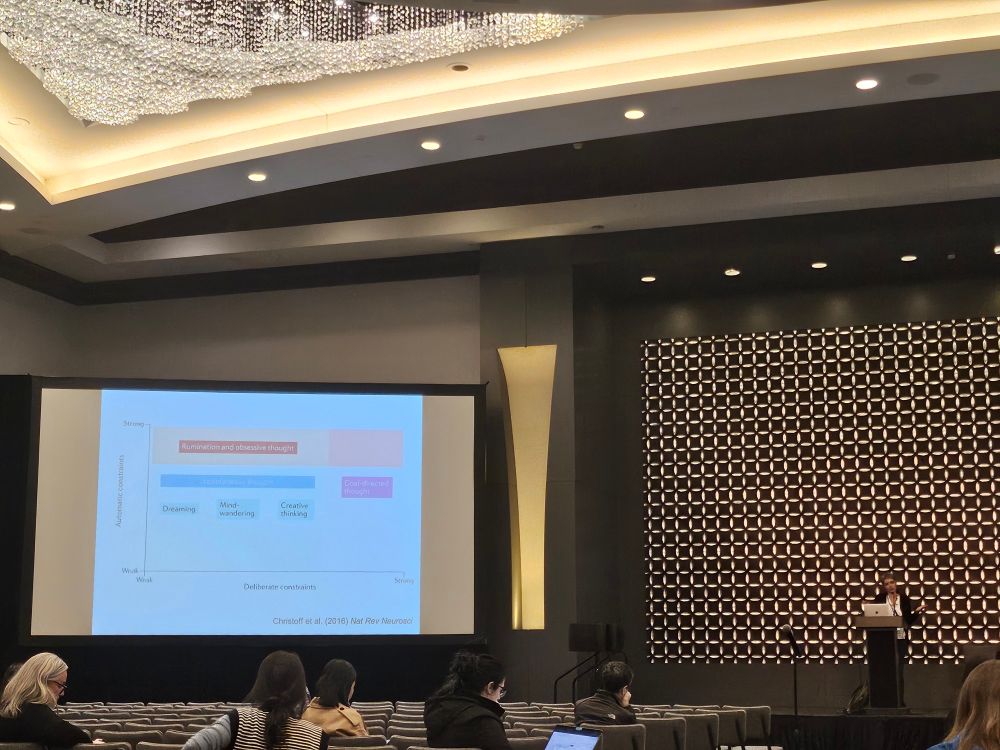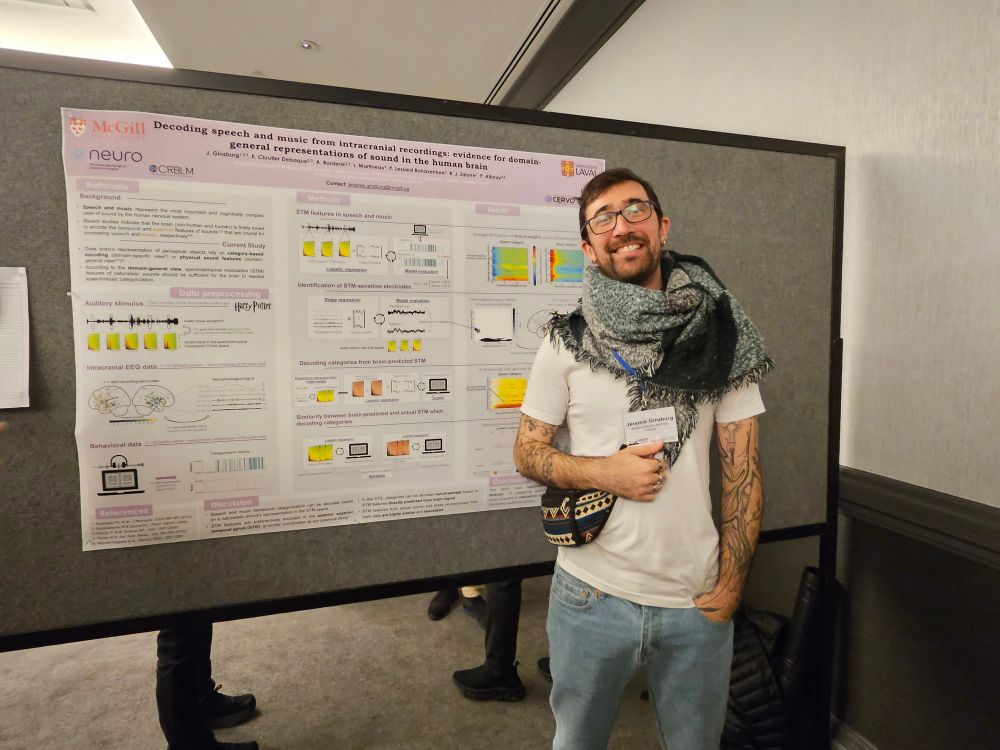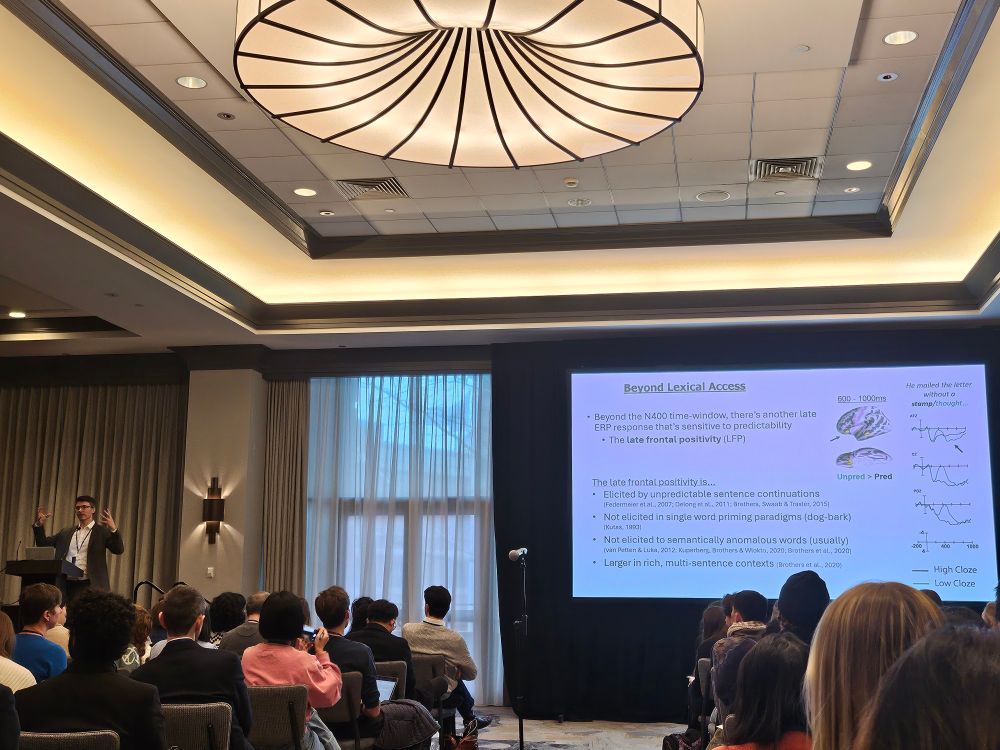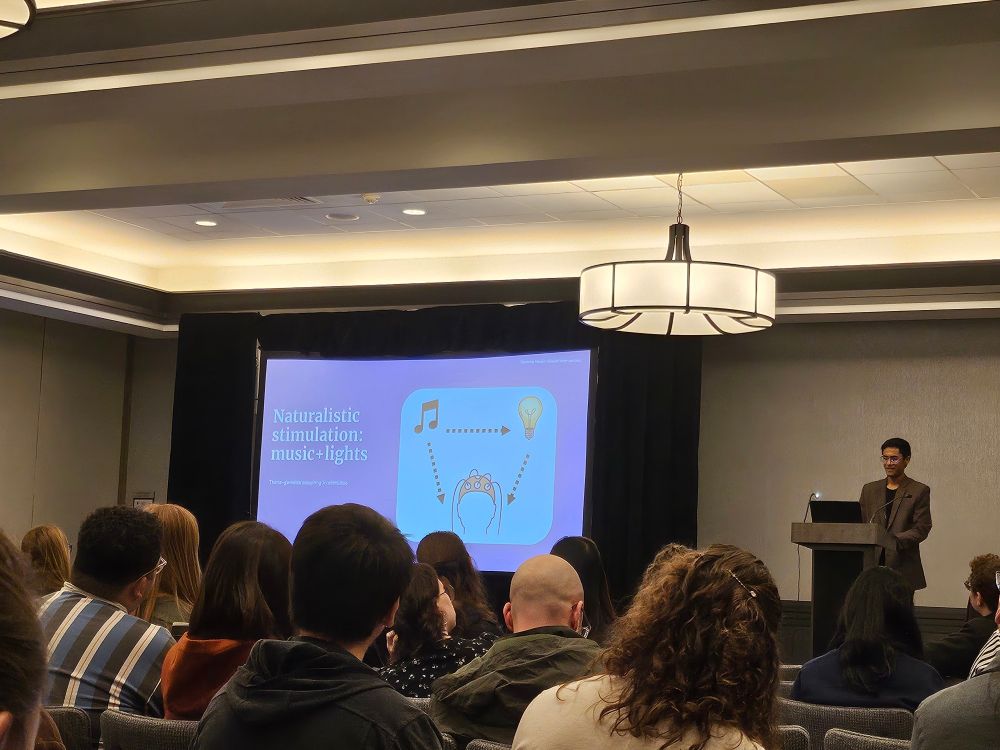
Talk 5 by Prof. Kalina Christoff is sharing insights based on the dynamic framework of thought and emphasizing on the subcortical-to-cortical interaction within the type A DMN about the neural correlates of the spontaneous thoughts.

Talk 5 by Prof. Kalina Christoff is sharing insights based on the dynamic framework of thought and emphasizing on the subcortical-to-cortical interaction within the type A DMN about the neural correlates of the spontaneous thoughts.
Talk 4 by Yuhua Yu @yuhuay.bsky.social
They use a think-aloud paradigm and a hidden-Markov model to investigate the temporal dynamics of spontaneous thoughts to address the challenges of integrating content and dynamics across time✨

Talk 4 by Yuhua Yu @yuhuay.bsky.social
They use a think-aloud paradigm and a hidden-Markov model to investigate the temporal dynamics of spontaneous thoughts to address the challenges of integrating content and dynamics across time✨
Talk 3 by Prof. Matthias Mittner
They investigate attentional switches from a combined fMRI and pupilometry study based on a theoratical model with NE activity and develop a probed hidden-Markov model to predict the mental state on-off.

Talk 3 by Prof. Matthias Mittner
They investigate attentional switches from a combined fMRI and pupilometry study based on a theoratical model with NE activity and develop a probed hidden-Markov model to predict the mental state on-off.
Symposium 9 Talk 2
Prof. Aaron Kucyi is sharing the preliminary results under the topic of “predicive neural modeling of resting-state spontaneous though” with neural data from 3 intensively-sampled individuals.

Symposium 9 Talk 2
Prof. Aaron Kucyi is sharing the preliminary results under the topic of “predicive neural modeling of resting-state spontaneous though” with neural data from 3 intensively-sampled individuals.
Symposium 9 Talk 1 by Julia Kam from the University of Calgary is sharing insights from EEG signals about neural oscillatory signatures of ongoing thoughts during naturalistic tasks.

Symposium 9 Talk 1 by Julia Kam from the University of Calgary is sharing insights from EEG signals about neural oscillatory signatures of ongoing thoughts during naturalistic tasks.
Hosted by Aaron Kucyi kicking-off immerging cool research area in “Decoding spontaneous thought from neural activity.”

Hosted by Aaron Kucyi kicking-off immerging cool research area in “Decoding spontaneous thought from neural activity.”
Etienne Abassi from @zatorrelab presented his latest work using intact/scrambled music pieces to explore the cognitive mechanisms underlying auditory scene analysis focusing on the influence of social context and musical structures in 🎵 conversations!

Etienne Abassi from @zatorrelab presented his latest work using intact/scrambled music pieces to explore the cognitive mechanisms underlying auditory scene analysis focusing on the influence of social context and musical structures in 🎵 conversations!
Jeremie Ginzburg from @zatorrelab presented their work with intracranial recordings using Harry Potter audio materials to decode speech and music these two categories. They found that the categorization relies primarily on the spectrotemporal features of sound!

Jeremie Ginzburg from @zatorrelab presented their work with intracranial recordings using Harry Potter audio materials to decode speech and music these two categories. They found that the categorization relies primarily on the spectrotemporal features of sound!
Matthew Singh presented their amazing individualized modeling study entitled “Precision brain modeling reveals a bifurcation mechanism and local circuitry underlying individual differences”. Ref: www.pnas.org/doi/10.1073/...

Matthew Singh presented their amazing individualized modeling study entitled “Precision brain modeling reveals a bifurcation mechanism and local circuitry underlying individual differences”. Ref: www.pnas.org/doi/10.1073/...
Brennan Hagan presented some promising preliminary results using TMS-EEG and Perturbation Complexity Index to assess consciousness and it's cognitive correlates in Alzheimer✨

Brennan Hagan presented some promising preliminary results using TMS-EEG and Perturbation Complexity Index to assess consciousness and it's cognitive correlates in Alzheimer✨
Poster session F
Michael Angyus presented a study exploring “Does prediction error in the auditoty system have associated changes in entropy” using an auditory odd ball task. They find a correlation with entropy and MMN amplitude. pubmed.ncbi.nlm.nih.gov/31221820/

Poster session F
Michael Angyus presented a study exploring “Does prediction error in the auditoty system have associated changes in entropy” using an auditory odd ball task. They find a correlation with entropy and MMN amplitude. pubmed.ncbi.nlm.nih.gov/31221820/
Miriam Hauptman presented their findings about causal inferences using reading materials and its neural correlates. Ref: elifesciences.org/reviewed-pre...

Miriam Hauptman presented their findings about causal inferences using reading materials and its neural correlates. Ref: elifesciences.org/reviewed-pre...
Ziming Cheng showed their results about the dynamic interaction between narrative and gaze reinstatement on different age groups!

Ziming Cheng showed their results about the dynamic interaction between narrative and gaze reinstatement on different age groups!
@danielagresch.bsky.social presented her latest work about visual and motor working memories retrieval using EEG. She showed exciting results both from visual and motor oscillatory results.

@danielagresch.bsky.social presented her latest work about visual and motor working memories retrieval using EEG. She showed exciting results both from visual and motor oscillatory results.
Niels Kloosterman shared their latest results about metacognition using SDT and EEG evidence from both oscillatory and entropy results using an auditory paradigm on young and old participants to dissociate different response styles. Ref:https://pubmed.ncbi.nlm.nih.gov/39843334/?s=09

Niels Kloosterman shared their latest results about metacognition using SDT and EEG evidence from both oscillatory and entropy results using an auditory paradigm on young and old participants to dissociate different response styles. Ref:https://pubmed.ncbi.nlm.nih.gov/39843334/?s=09
Anne Marazita shared an exciting study about “The information geometry of flexible decision making”. They proposed a new theoretical framework to address the dynamic account of flexible decision-making on 🐒.

Anne Marazita shared an exciting study about “The information geometry of flexible decision making”. They proposed a new theoretical framework to address the dynamic account of flexible decision-making on 🐒.
🧵 coming 1/n
Leo Yuhao Jin Shared exciting results about showed that 🐒 can dissociate learnable vs unlearnable pic sequences both beh and dACC. Also the correlation with beh and neural data. Ref:https://www.pnas.org/doi/full/10.1073/pnas.2202789119

🧵 coming 1/n
Leo Yuhao Jin Shared exciting results about showed that 🐒 can dissociate learnable vs unlearnable pic sequences both beh and dACC. Also the correlation with beh and neural data. Ref:https://www.pnas.org/doi/full/10.1073/pnas.2202789119
Prof Rachel Denison is sharing insights of the neural temporal dynamics of visual temporal attention, using SSVER, decoding, phase analyses and source reconstructions.

Prof Rachel Denison is sharing insights of the neural temporal dynamics of visual temporal attention, using SSVER, decoding, phase analyses and source reconstructions.
Prof Trevor Brothers is offering insights into predictive coding in language hierarchies with an emphasis on the “Beyond Lexical Access”.

Prof Trevor Brothers is offering insights into predictive coding in language hierarchies with an emphasis on the “Beyond Lexical Access”.
Fantastic talk given by Arun Asthagiri from @psycheloui.bsky.social lab @DataBlitzSession2, exploring whether multimodal (here in this context audiovisual) entrainment can be used to lift mild cognitive impairment as suggested by previous animal studies!

Fantastic talk given by Arun Asthagiri from @psycheloui.bsky.social lab @DataBlitzSession2, exploring whether multimodal (here in this context audiovisual) entrainment can be used to lift mild cognitive impairment as suggested by previous animal studies!
A kick-off of “The connectivity crisis” by Prof Ole Jensen @olejensen.bsky.social @ox.ac.uk
Multivariate measures of functional connectivity is a way forward? Looking forward to the poster presentation soon!

A kick-off of “The connectivity crisis” by Prof Ole Jensen @olejensen.bsky.social @ox.ac.uk
Multivariate measures of functional connectivity is a way forward? Looking forward to the poster presentation soon!

